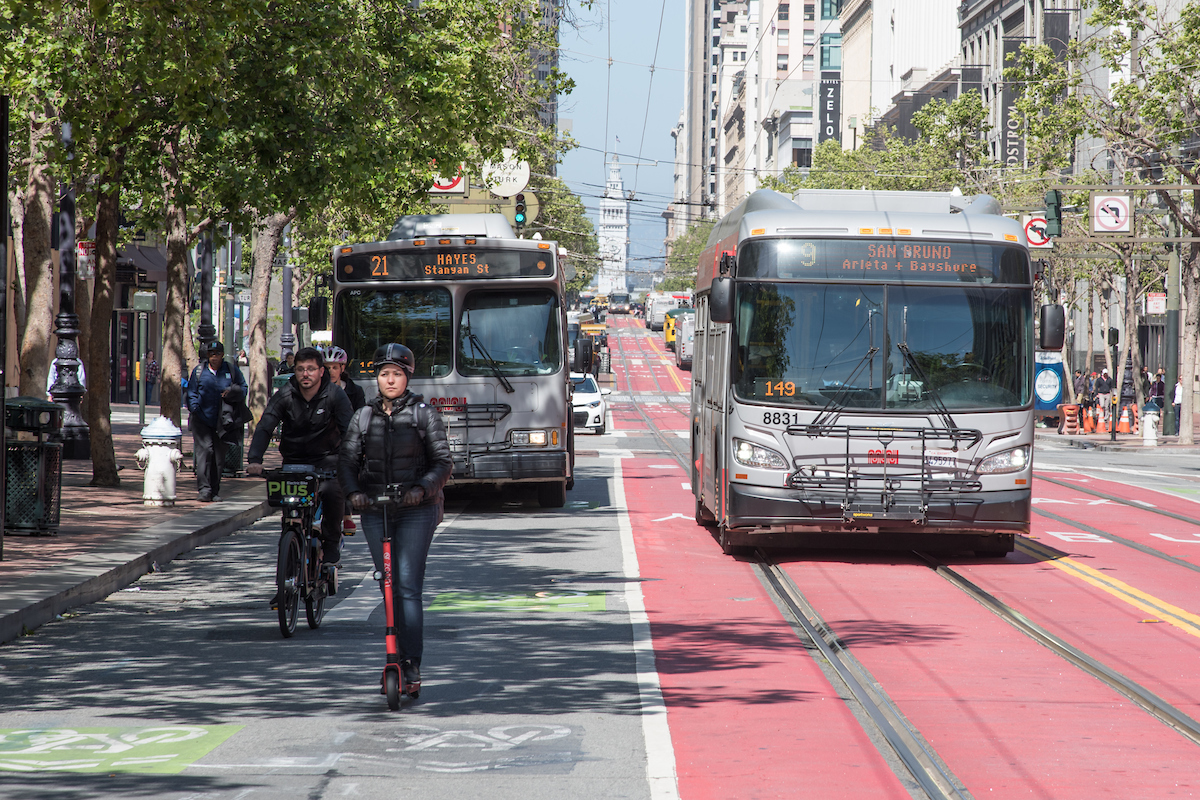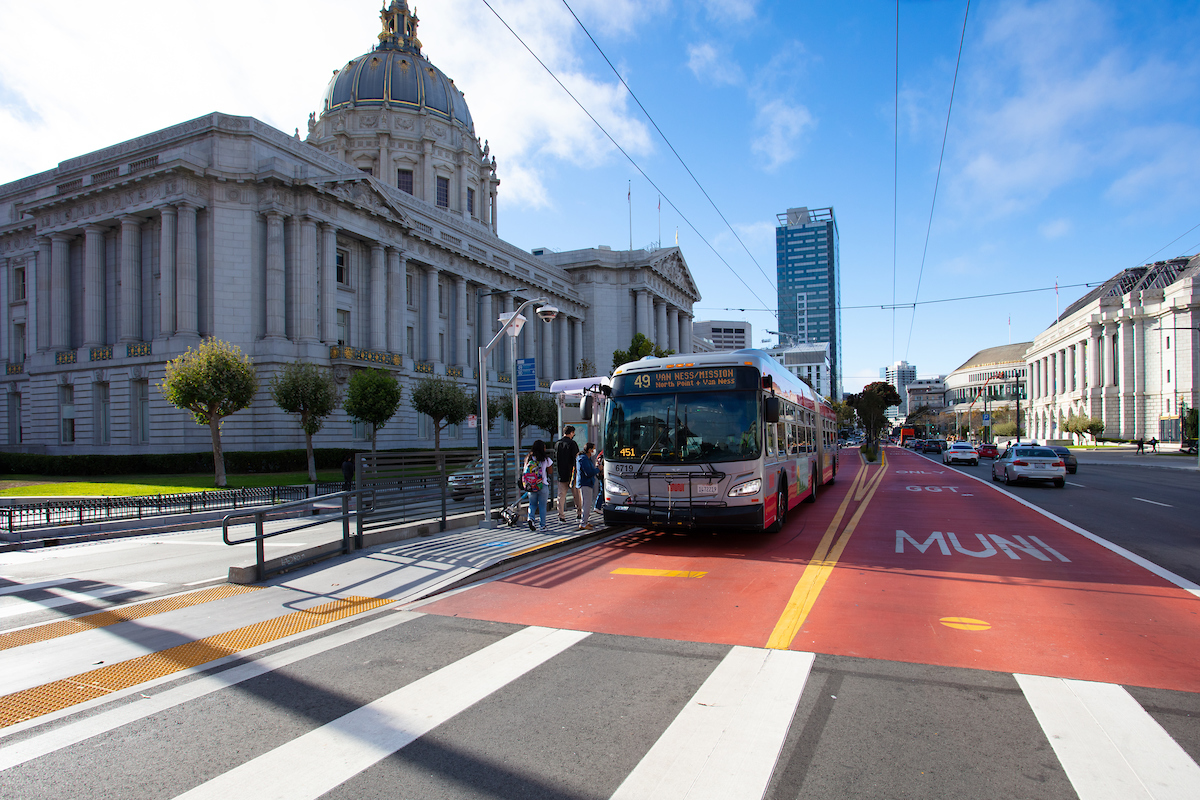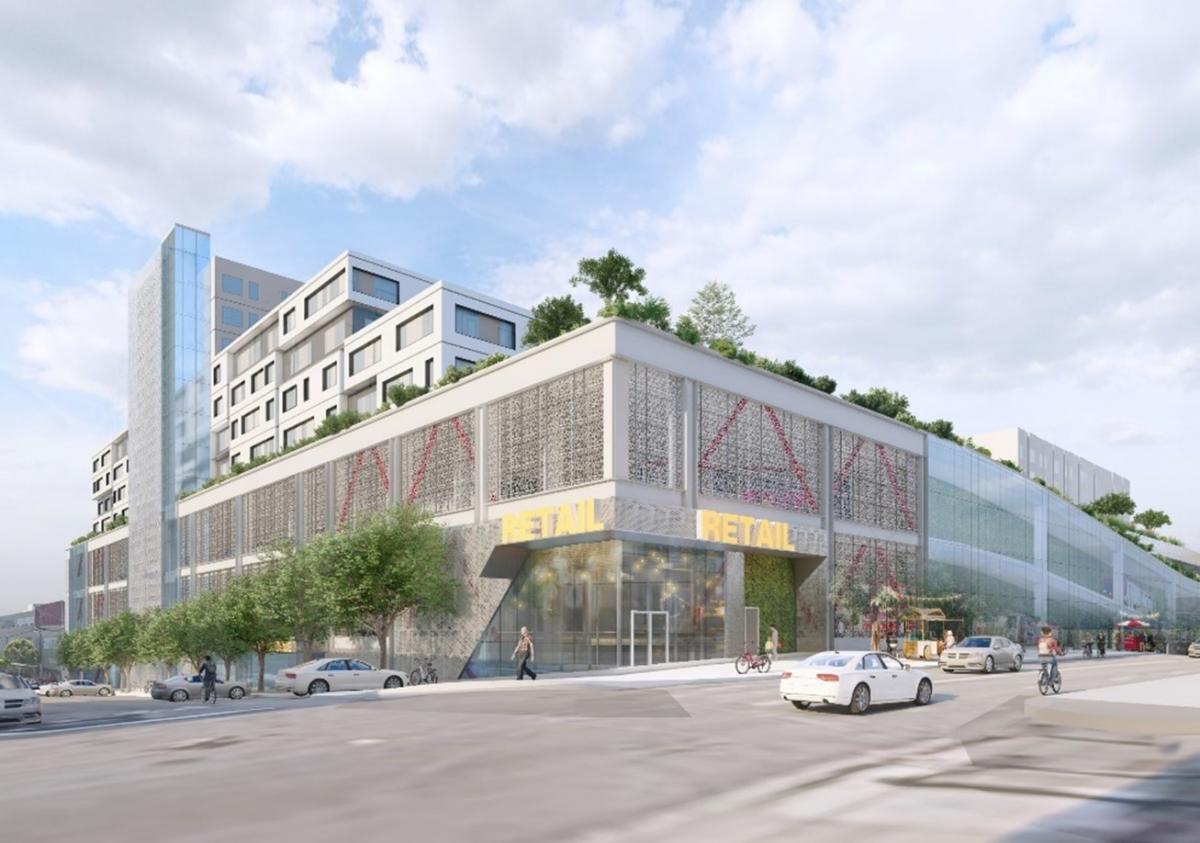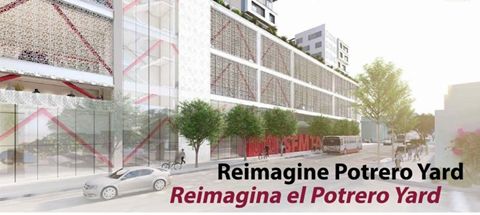Growing India News, world news, nation news, our news, people's news, grow news, entertainment, fashion, movies, tech, automobile and many more..
Saturday, March 18, 2023
Show HN: Llamero – A GUI app to easily download, install and infer LLaMA models https://ift.tt/fqZ74Ve
Show HN: Writing my masters thesis in public https://ift.tt/WZTSwPB
San Francisco’s Transit-First Policy Turns 50
By Michael Delia

Transit on Market Street in downtown San Francisco, 2018
It’s been a half-century since the San Francisco Board of Supervisors put transit needs above all other traffic initiatives, and now, the city’s Transit-First policy is celebrating its golden anniversary. The policy guides the city’s work on major infrastructure projects and planning efforts. Its principles drive San Francisco officials to promote incentives that reduce traffic congestion and solo vehicle trips, support transit investments including the purchase of Muni buses and light rail vehicles, and regularly evaluate how well our transportation network functions.
Adopted on March 19, 1973, the original Transit-First policy was born out of an effort to reshape the Municipal Railway so it could serve San Franciscans' needs more effectively. The goals were very specific:
- Create exclusive bus lanes and prohibit automobiles from streetcar and cable car tracks.
- Restrict turning movements of automobiles that conflicted with transit vehicles.
- Extend sidewalks at transit stops to allow boarding from the travel lane.
- Strictly enforce parking codes and tow-away regulations along major transit corridors.
- Consider the use of preemptive traffic signals for transit vehicles.
By the early 70s, San Francisco streets had become increasingly crowded. The Freeway Revolt just over a decade earlier led to the cancellation of planned highway construction in the city, and an office boom downtown was bringing in thousands of commuters. Meanwhile, the San Francisco Bay Area Urban Renewal Association (SPUR) began a comprehensive review of Muni’s operations in 1972. The organization interviewed operators and management, conducted line checks and reviewed company properties and processes to identify areas for improvement.
“The recurring theme was most Muni vehicles were operating in traffic. This was the source of many problems — schedule bunching, accidents, unhappy operators and riders,” said Jim Chappell, executive director of SPUR from 1994-2009.
The recommendations in SPUR’s report, “Building a New Muni,” were well-received by the mayor and city supervisors, and the Transit-First policy was passed not long after its release. Transit-First also addressed concerns about increased air pollution and environmental damage by effectively putting the personal automobile on notice.

Transit-only lane along the Powell Street cable car tracks from California to Pine Street | November 27, 1973
New equipment, transit priority and a focus on complete funding for Muni were initial hallmarks of the policy. The passage of Proposition E, a city charter amendment, in 1999 further enhanced Transit-First by including protections in the landmark legislation for people walking and bicycling.
“San Francisco’s Board of Supervisors showed remarkable foresight in adopting the Transit-First resolution, and it no doubt helped San Francisco remain one of the strongest public transit cities in the nation,” said Jason Henderson, San Francisco State University Geography and Environment professor and author of Street Fight: The Politics of Mobility in San Francisco.
In addition to making transit, walking and biking more attractive, Transit-First also promotes equity. When residents have options beyond cars, employment and economic opportunity can grow, as does the opportunity to reduce greenhouse gases.
Professor Henderson believes San Francisco was the first city in the country to adopt a policy to prioritize public transit, but that doesn’t mean the work is done. “Transit-First must no longer be advisory,” he said. “[New policies are] needed so that public transit, cycling and walking are more than aspirational.”
In recent years, the “Muni Forward” program has reflected the Transit-First policy with 80 miles of transit priority street improvements. Among those improvements, diamond-marked transit lanes have evolved to become the present-day “Red Carpet” lanes reserved exclusively for buses and taxis to reduce travel times and the impact of traffic congestion on Muni schedules. Meanwhile, Market Street has gone through various redesigns in the downtown area over the years. Following boarding island and lane improvements, San Francisco’s busiest thoroughfare received its first red transit lanes in 2014 and was declared “Car Free” in a monumental celebration on January 29, 2020.

Riders board a 49 Van Ness/Mission bus near City Hall
Today we can see the Transit-First policy in action in the now open Central Subway and projects such as the Van Ness Bus Rapid Transit (BRT) corridor and the Muni Forward L Taraval Improvement Project that is now under construction to add transit lanes, make the route more accessible and improve pedestrian safety and visibility. With Transit-First entering its 51st year, there are new challenges as the COVID-19 pandemic has driven many people back into private cars. However, the SFMTA’s improvement projects continue with a focus on proven strategies that make transit, walking and bicycling the city’s preferred modes of travel.
Published March 17, 2023 at 11:42PM
https://ift.tt/mUAGHK0
Show HN: AI tool to guess your personality from your tweets https://ift.tt/0jxUDoS
Show HN: Weigh My Luggage – Just bring a bathroom scale https://ift.tt/Vv8NaPT
Friday, March 17, 2023
Show HN: GPT4 – Full Playthrough of Pokemon Yellow https://ift.tt/9Sabnxv
Reimagining Potrero Yard – A Community Open House, Saturday, March 18
By John Angelico

This conceptual rendering shows one of the proposed spaces in the Potrero Yard project designated for small businesses and non-profits at the intersection of 17th and Hampshire streets. (Image: Arcadis IBI Group)
This Saturday we’re joining the Potrero Neighborhood Collective (PNC) developer team to host a community open house for the Potrero Yard Modernization Project, the nation’s first joint development of a bus facility with integrated housing and retail. Learn about how we’re improving transit by replacing a century-old bus yard with a modern facility, as well as addressing SF’s need for affordable housing. Please join us to view the latest designs and give your input on this groundbreaking project.

Join us! Reimaging Potrero Yard. Saturday, March 18, 2023, 1-3 p.m. KQED, 2601 Mariposa Street, SF. (Conceptual rendering from Arcadis IBI Group)
What: Reimagining Potrero Yard Community Open House
Español - Reimagina el Potrero Yard. Sábado 18 de marzo, 1-3p.m. KQED, 2601 Calle Mariposa, San Francisco CA
When: Saturday, March 18, 1-3 p.m.
Where: KQED building, 2601 Mariposa Street, San Francisco, CA 94110
This event will be family-friendly with activities for all ages. Take a tour of Potrero Yard to get an inside look at this 108-year-old facility and check out the historic Muni bus we’ll have parked outside. Childcare and lunch will be provided.
Safety note: Closed-toed shoes required, and no strollers allowed on the tour.
For interpretation or other accommodations, please contact PotreroYard@plenarygroup.com or 415-646-2223 at least 48 hours before the event.
Topics we need community input on include:
-
Streetscape on 17th Street: What type of amenities and activities would you like to see on 17th Street to create a welcoming environment?
-
Spaces for small businesses & non-profits: What kind of neighborhood organizations or businesses would you visit? What type of street vendors would you like to see?
-
Landscaping choices along sidewalks: Creative landscaping can greatly improve the vibrancy and safety of spaces. We want your ideas — including which tree species you’d like to see.
-
Look and feel of the building: Do you have ideas on building materials? Let us know what colors, textures and artistic elements you’d like to see on the new structure.
-
Public art: Art in the public realm can enliven spaces and capture the essence of unique neighborhood characteristics. The project’s Public Art strategy will be developed with input from the community. Learn more at our upcoming informational presentation to the SF Arts Commission Civic Design Review Committee on Monday, March 20.
At the end of 2022, we selected the Potrero Neighborhood Collective to partner with the city and launch the current predevelopment agreement phase. This period lasts roughly 18 months. The Potrero Yard Modernization Project has always considered transparency and open dialogue to be key as we partner with the community to bring this project forward. The project would not be where it is today without that community partnership. This open house is an opportunity to help shape the project’s design before we break ground in 2024.
To learn more, visit the Potrero Yard Modernization Project (SFMTA.com/PotreroYard).
Published March 17, 2023 at 03:55AM
https://ift.tt/bVXMTta
Show HN: I built a Raspberry Pi webcam to train my dog (using Claude) https://ift.tt/14pnsOW
Show HN: I built a Raspberry Pi webcam to train my dog (using Claude) Hey HN! I’m a Product Manager and made a DIY doggy cam (using Claude a...
-
Show HN: An AI logo generator that can also generate SVG logos Hey everyone, I've spent the past 2 weeks building an AI logo generator, ...
-
Breaking #FoxNews Alert : Number of dead rises after devastating tornadoes, Kentucky governor announces — R Karthickeyan (@RKarthickeyan1)...
-
Show HN: Snap Scope – Visualize Lens Focal Length Distribution from EXIF Data https://ift.tt/yrqHZtDShow HN: Snap Scope – Visualize Lens Focal Length Distribution from EXIF Data Hey HN, I built this tool because I wanted to understand which...